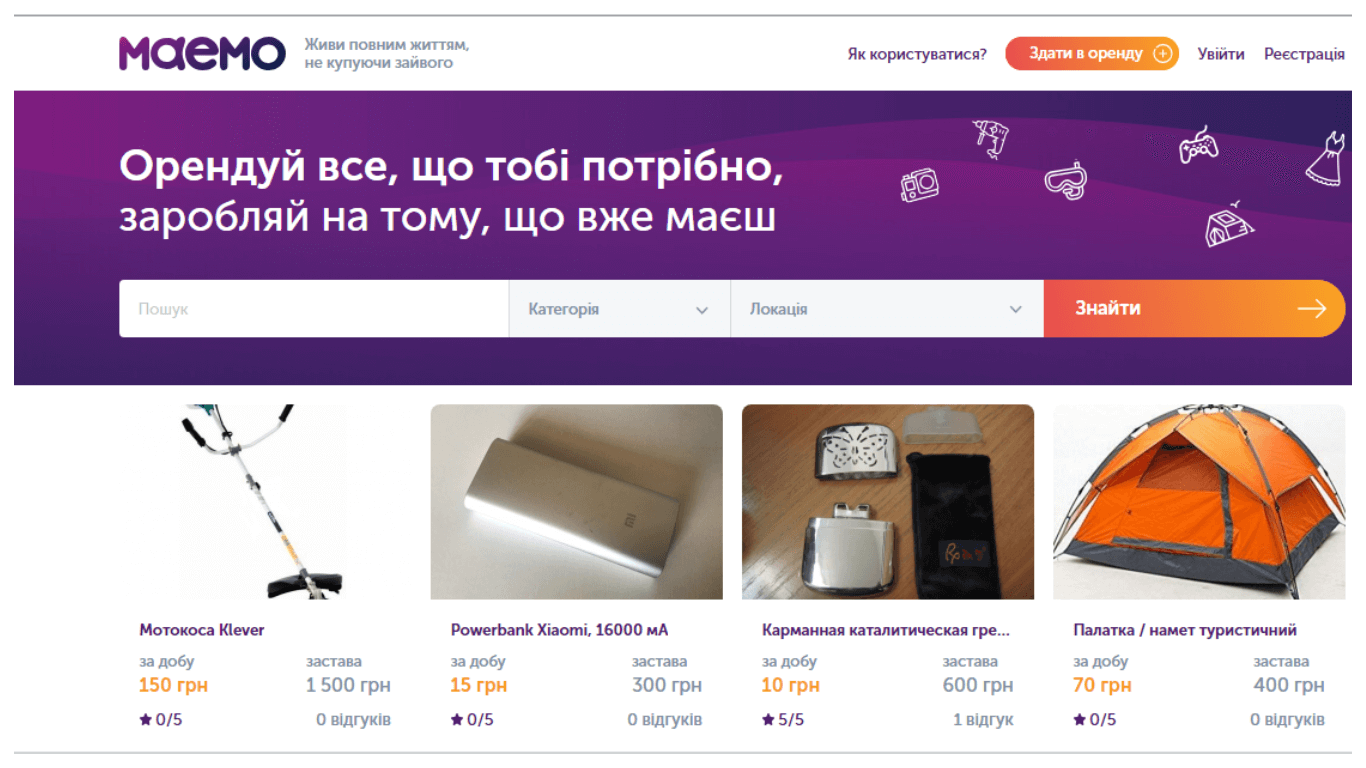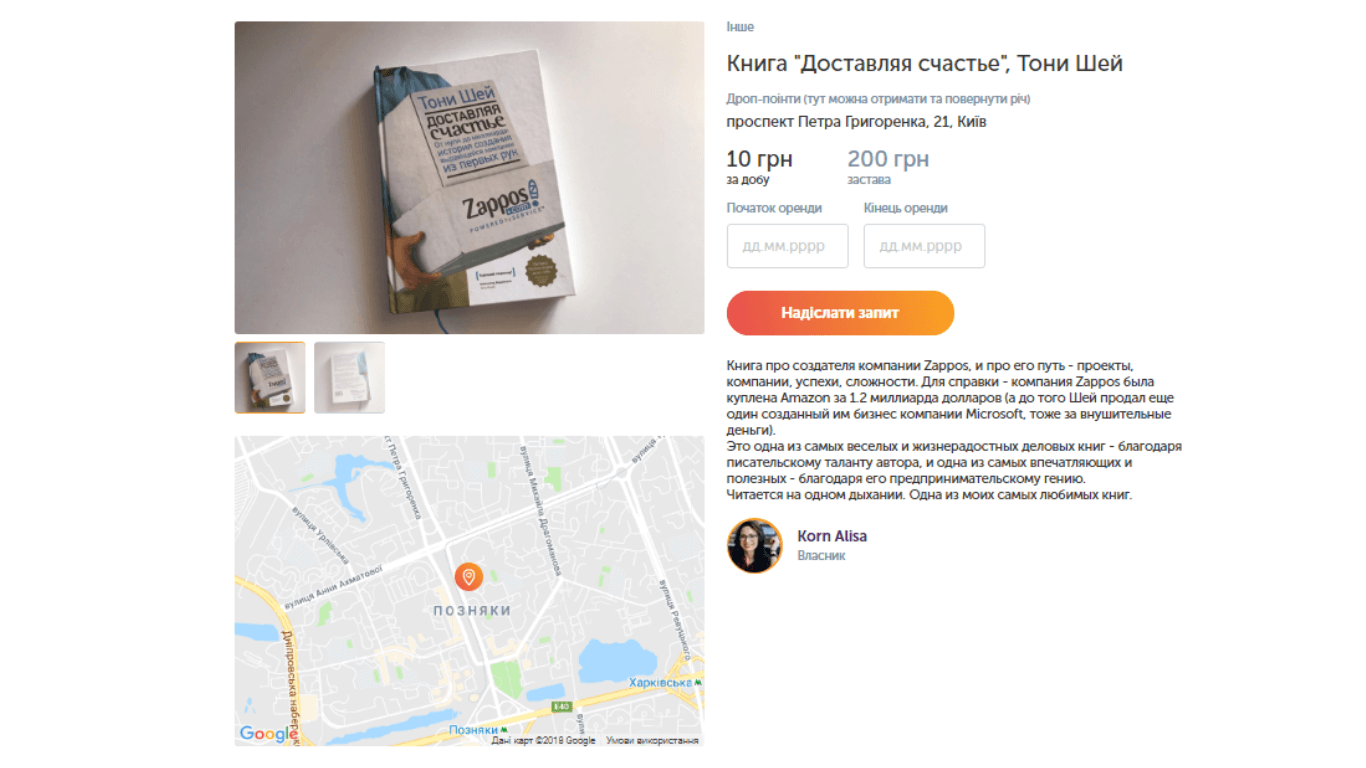
With more and more clients switching online in the search of goods and services, there grows the popularity of online marketplaces as the ideal spots for buying and selling whatever you like. There are marketplaces for selling and exchanging goods, renting, booking, transport services, tenders, auctions, food delivery, logistics, education, job search, and many others. And new types are emerging here and there every other day. Well, why not, taking into account the profitability of the online marketplace business.
In the United States, the eCommerce market is expected to witness consistent growth in the number of users from 2023 to 2027, with an overall increase of 15.2 million users, marking a 5.53 percent growth rate. Following nine consecutive years of expansion, this trend is projected to culminate in an estimated 289.91 million users by 2027, setting a new peak. It's worth highlighting that the number of eCommerce market users has demonstrated steady growth in recent years. For some well-established commerce giants online marketplaces provide more than 40 % of products sold, and for some comparatively new companies, they represent 100% of sales, sometimes exceeding the billion dollar mark. Such popularity owes much to numerous advantages online marketplaces give for all the parties involved: buyers, sellers, operators, and third-party vendors like logistic companies.
Factors Affecting the Cost of Building an Online Marketplace
Building an online marketplace can be an exciting opportunity, but also a significant investment. The total cost of building a marketplace website can vary greatly. It depends on several key factors described below.
Want a web app that does more?
Let's build a solution that's smart, sleek, and powerful.
Alina
Client Manager

The complexity of features is one big factor. Basic marketplaces with simple buy/sell functions cost less than the ones with advanced features like auctions, subscriptions, etc. More features mean more development work is required.
Another factor is the technology stack used. It is the programming languages, databases, hosting services, etc. Using open-source technologies can help reduce costs compared to proprietary, licensed software.
The design and user experience are also important. Basic templates are cheaper, but custom-designed interfaces with great UX will add to the budget.
The scope of the project makes a difference too. An MVP (minimum viable product) with core functions is cheaper than building the full vision upfront. You can start smaller and scale up later. Yet, ongoing costs for hosting, maintenance, and future upgrades need to be accounted for after launch. Building in scalability and flexibility from the start can reduce long-term costs.
Lastly, the team you hire affects costs. Hiring an experienced, specialized team ensures quality but costs more than hiring freelancers or fresh graduates.
So, to draw a line - requirements, technology, design, scope, and the development team are key factors that impact overall costs for your online marketplace.
Business Advantages of Online Marketplaces
Online marketplaces bring together large numbers of buyers and sellers. They serve as mediators between different groups and provide convenient conditions and necessary guarantees. Transparent purchasing process attracts customers who can clearly see and compare relevant prices and availability on stock and choose from a wide range of options without leaving a single platform. There is no need to check dozens of sites or go to the mall, all shopping is done just in several clicks.
Sellers, on the other hand, get access to a much wider audience. Small stores or vendors who hesitate about establishing their own e-commerce website join online marketplaces to reduce risks and secure position in the market. And for marketplace operators, it is a good opportunity to earn money from transactions without keeping warehouses, dealing with logistics and other similar issues.
Taking all the above-mentioned into account, you might have already started thinking of opening your own online marketplace. Well, then you should have also wondered about the price of the issue. And though there are many things you need to consider, the first order of business is the website development. Let’s see how much it may cost and what you need to pay attention to.

Online Marketplace Development: Things to Consider
When building an online marketplace, you may choose from two options: using one of the ready-made platforms or building your custom marketplace from scratch. Both variants have their advantages depending on your business objectives.
On one hand, we need to face it: using an already existing platform in many cases may really make the marketplace app development cost less. At the same time, using common and conventional tools, you should be ready that the product you get as a result won't also differ much from hundreds of already existing options. Not a good chance to set yourself apart from the competitors. Or to promote a very new and specific product or service. In such cases, custom development is worthwhile.
The set of functions you would like to see in your marketplace also influences the cost of the development: the more complex the website architecture is, the more expensive it is to develop and to maintain so complicated and sophisticated functionality. But there is good news: almost all modern tricked-out giants started as very simple services with a minimum of functions. So, Etsy, for example, was built and released just in three months, and the functionality of the website changed gradually and is still expanding 13 years after the launch.
We also recommend you to start with an MVP (minimum viable product) to check how things go — and then develop your marketplace further based on the real emerging needs of your business. This is, by the way, one more argument in favor of custom development: you always can adjust your site to your business, and not vice versa. What this simplest version of your product should include largely depends on the results of the idea validation. The latter is a necessary step if you want to create a product your prospective clients might be interested in. Though, there are some most common functions which any online marketplace should include. Let’s consider them and define their implementation cost.
Mandatory Feature Set

No matter what kind of an online marketplace you are going to establish, there are two obligatory constituents you will need: the administration panel and the user platform.
The administration panel is aimed at controlling product inventory, clients, orders, payments, and all necessary marketplace settings. The administrator registers new users, sets commissions for sellers, approves products, allots categories, and manages ratings and reviews. As standard, it fully belongs to the backend side of the service and is not visible for the clients.
The user platform, depending upon your business model, may be even or may comprise different dashboards for different user roles (for example, buyers and sellers). The features it should obligatory possess are:
- registration form,
- account page,
- authorization and security,
- client support system,
- item listing,
- search engine,
- shopping cart,
- reviews and testimonials,
- integrated payment functionality,
- shipping functionality.
Without these features, it will be difficult to provide the necessary level of convenience and security for the marketplace users and to keep the site appealing and competitive. If you decide that this functionality is enough for your marketplace, you may choose a monolithic solution which will certainly cost you cheapest, but in this case, you should be aware that such websites are not scalable. That is, you will not be able to add new functions to your marketplace in the future. More complex scalable solutions include both backend and frontend development and demand REST API which enables the smooth interaction between different parts of the service.
Depending upon your business specificities, the major set of options in your online marketplace may slightly vary. Let’s examine the example of Maemo, the online rental marketplace developed by Stfalcon.
Example of Implementation: Maemo
Maemo is a rental service whose task is to match users who want to rent or rent out different items. Since the site has a simple purpose, it was developed as a monolithic web page by means of PHP framework Symfony. In one of our previous articles, we explained why it fits best such types of projects. As the site is not scalable, the team had to think through the functionality very thoroughly. We used most of the mandatory features and added some additional functions to make the website handy and attractive to users.

The service consists of a standard administration panel and a user platform. Since users may want both to rent and rent out things, they can easily switch between these roles from a single account. The users can manage their profiles, items they rent, browse the history, leave reviews, make deals, and communicate with each other with the help of a real-time chat.
Users are often distracted from online purchase by the lengthy and complicated registration process. To make registration as quick and simple as possible, we integrated registration via the Facebook profile. All payments and payouts are conducted through the integrated Fondy payment system which has recommended itself well in the Ukrainian market. The specific feature of the service is an integrated map with drop-points where users can see the address of the renter and the distance from their place to the location of the rented item.

You may learn more about Maemo development from the case presentation.
Thus, what we have is a quite simple but functional product which wonderfully copes with its tasks. Should the client have decided in favor of a scalable development, the functionality of the website might have been extended further on.
Further Versions and Additional Features
More complex online marketplace solutions may include such functions as integrated analytics, smart notification system, filters and feeds, item videos, order tracking, multiple payment options and bunching, return policy, referral programs and socializing elements like chat, likes or social media sharing. You may even implement such up-to-date technologies as virtual and augmented reality or AI.
What we strongly advise to think of is a development of a mobile app (or even several) for users. Today, people use mobiles for purchasing more and more often. According to statistics, over the course of the last 6 years, the number of people using their phones to shop has grown by 133% globally. As an example, eBay’s app has been downloaded by more than 50 million people worldwide, representing 190 countries.
Apps provide advantages which no version of the site does, like PushUp notifications, geofencing, offline mode etc. That’s why many online businesses today entrust more and more of their activities to mobile apps.

Time and Money Estimation
As you have understood, the marketplace app development cost may considerably vary depending upon the functional set you choose. The development of the online marketplace requires coordinated efforts of different specialists and includes project management, UX and UI design, backend and frontend development, layout, and quality assurance.
It will take up to 800-1000 hours to develop a website with the basic set of functions (like those mentioned above), and the development will approximately last for 3 months. The rough marketplace app development cost of a basic functional set is $80K.
And if you decide to create a more complex solution or add some new functions to the already existing site, you will need to budget extra expenses, for example, 20-30 work hours for the development of notifications functionality or 80-90 hours for the browsing content functionality. A complex marketplace with a vast functionality may cost up to $180K.
The development of a mobile app for one platform (either Android or iOS) will take about 400 hours and will approximately cost $60K. The figures can also vary depending on the complexity of an app.
Cost Breakdown
To give you a better idea of how much does it cost to develop a marketplace app, here's a breakdown of some of the major expense categories.
Platform Development
This is usually the biggest line item. It includes coding the frontend user experience, backend functionality, databases, and more. For a basic marketplace, development costs can start at $15,000. More complex projects with advanced features can run $50,000+.
It's wise to invest sufficiently in design and development from the start. A well-designed, user-friendly marketplace will attract buyers and sellers. Skimping on development could lead to technical issues and limitations down the road.
Third-Party Integrations
To provide additional functionality, you may want to integrate your marketplace with third-party services like live chat, CRM, accounting software, etc. Each integration adds development time and potential subscription fees.
Payment Processing
To handle online transactions, you'll need payment gateway integration. Popular options like PayPal, Stripe, and Authorize.Net typically charge around 3% + up to $0.50 per transaction. Monthly subscription fees are also common for payment services.
Hosting
Once your marketplace is built, you'll need to host it on a web server and register a domain name. Larger, high-traffic marketplaces require more robust hosting, leading to higher costs. Domain registration is relatively inexpensive at around $10-30 per year.
Maintenance & Support
Ongoing maintenance, bug fixes, and support can cost $10,000 to $50,000 per year for basic marketplaces.
The costs can run the gamut based on your specific requirements. But this breakdown hopefully provides a better framework for budgeting and long-term planning for your online marketplace.
Price Ranges for Different Types of Online Marketplaces
The cost of building an online marketplace can vary depending on its complexity and features. Here are some typical price ranges for how much does it cost to build a marketplace website for different types of marketplaces:
Basic marketplace
A basic online marketplace with core features like product/service listings, search functionality, and payment processing integration can cost anywhere from $15,000 to develop. This type of marketplace is suitable for small businesses or startups with limited budgets.
Advanced marketplace
An advanced marketplace with additional features like user ratings and reviews, a messaging system, and analytics tools can cost between $50,000 and $100,000. These features enhance the user experience and provide valuable insights for business owners.
Enterprise-level marketplace (custom features, high scalability)
For large-scale enterprises or businesses with unique requirements, an enterprise-level marketplace with custom features and high scalability can cost $100,000 or more. This type of marketplace is tailored to meet specific business needs and can handle a large volume of transactions and users.
Cost-Saving Strategies
Marketplace website development involves considerable upfront investment. However, there are ways to be strategic and make your budget go further. Here are some cost-saving strategies to consider when you want to create an online marketplace.
Start with an MVP
Rather than trying to build your "dream" marketplace from day one, start with a Minimum Viable Product (MVP). Focus just on the core features needed to launch something functional. You can then gather user feedback and data to make enhancements.
Outsource Overseas
Consider outsourcing development work to companies or freelancers in countries with lower labor costs. However, be sure to thoroughly vet candidates. You might face challenges around communication and oversight when working remotely across borders.
Limit Paid Advertising Early On
Before investing in paid advertising and marketing campaigns, you must have an established user base. Concentrate on SEO, social media engagement, and other low-cost strategies first, to build traction organically.
Optimize Processes
Work with your development partner to streamline processes and increase efficiency wherever possible. Techniques like agile development, code reusability, and automated testing can help maximize output.
Adopting smart cost-saving approaches allows you to build a high-quality online marketplace without blowing your entire budget before launch. The key is striking a balance - building something viable within your budget today, while setting yourself up to cost-effectively scale and expand capabilities down the road.
Ongoing Costs and Maintenance
Launching your online marketplace is an exciting milestone, but the work doesn't stop there. To keep your platform running smoothly and stay competitive, you'll need to account for ongoing costs and maintenance.
Server Hosting and Bandwidth
As your user base and traffic grow over time, you'll likely need to upgrade your hosting plan or migrate to more powerful servers. Expect hosting fees to increase accordingly. You'll also consume more bandwidth as usage ramps up.
Software Updates and Patches
Whether you use out-of-the-box software or have a custom platform built, you'll need to keep it updated with the latest security patches and feature releases from developers. Update costs can include licensing fees and developer time.
New Feature Development
To attract new users and keep existing ones engaged, you'll want to roll out new features and enhancements based on feedback. This ongoing development work is a key expense.
Performance Optimizations
As your database grows and complexity increases, you may need to invest in performance optimizations to maintain fast load times and a smooth user experience. Techniques like caching and code refactoring often require development resources.
Customer Support
Customer support inquiries from users grow with your marketplace. You'll need staffing resources to promptly handle questions and issues across channels like email, chat, phone, etc.
Marketing and Promotions
Acquiring new buyers and sellers is an endless pursuit. You'll need to invest in marketing, advertising, SEO, content creation, referral programs, and other promotional efforts.
Now you know how much does it cost to start a marketplace. Let’s dive deeper into the topic.
FAQs
How long does it typically take to develop an online marketplace?
Development timelines can vary a lot. A basic marketplace might take 3-6 months. More complex platforms with advanced features could take 6-12 months or longer.
How much does it cost to maintain and update an online marketplace after launch?
You should budget for ongoing maintenance and updates. Costs can range from a few thousand dollars per year for minor enhancements. Properly scoping maintenance needs upfront is important.
What are the benefits of outsourcing online marketplace development?
Outsourcing to an experienced development partner like Stfalcon lets you tap into specialized expertise. A credible agency will have a proven process and skilled developers familiar with marketplace platforms. Outsourcing is also quicker than hiring an in-house team. However, you may have less oversight, so vetting partners carefully is important. Outsourcing to an experienced development firm lets you tap into specialized expertise without having to hire an in-house team. It can reduce long-term staffing costs. It also allows you to scale the team up or down as needed based on your project requirements. However, you trade that flexibility for potentially higher hourly rates compared to hiring in-house.
Bottom Line
Investing in the development of a marketplace app or website can yield substantial returns when executed with precision. Despite the intense competition, opportunities persist for newcomers who offer distinctive value propositions or focus on specific niches.
You can get more precise marketplace app development cost by contacting our sales representatives. Our dedicated team has a solid expertise in the development of online marketplaces for different industries and various businesses, and we are ready to serve you with all our knowledge and skills!




